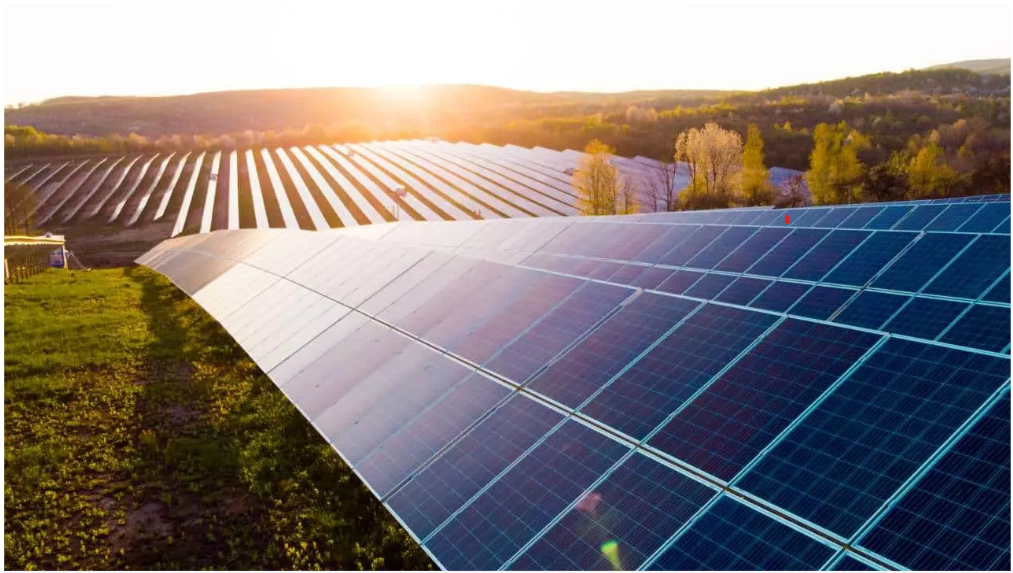The efficiency of solar modules act as a crucial factor in the widespread adoption of renewable energy. These devices capture the sun’s energy and convert it into electricity with effectiveness. Solar power has evolved dramatically from being the traditional modules such as monocrystalline and polycrystalline with 4% efficiency to newly advanced technological modules such as Perovskite Solar Cells, Tandem Cells, etc.
In this blog, we’ll delve into the efficiency of solar modules in today’s world and explore the ongoing innovations.
The Evolution of Solar Efficiency
Solar technology has come a long way since its discovery. Early solar cells, developed in the 1950s, had efficiency rates as low as 4%. These first-generation solar modules were expensive and impractical for widespread use. However, continuous research and development efforts have led to significant improvements.
For further information, have a look at the attached blog
EFFICIENCY OF SOLAR MODULES : THE PAST
Today’s solar modules, predominantly made from crystalline silicon, are a testament to this progress. They are more efficient, affordable, and versatile than ever before. The efficiency of solar modules is typically measured as a percentage of sunlight they can convert into electricity. Modern solar panels can achieve efficiencies ranging from 15% to an astonishing 22%, with some experimental technologies reaching even higher rates.
Factors Influencing Solar Module Efficiency
- Type of Solar Cells: There are several types of solar cells, including monocrystalline, polycrystalline – the traditional ones and thin-film, perovskite and tandem – the advanced technologies. Monocrystalline panels, in particular, are known for their efficiency and sleek design, making them a popular choice for residential and commercial installations. The advanced technologies offer a lightweight and flexible alternative to traditional panels.

Different type of solar cells
Link : https://www.researchgate.net/figure/Types-of-solar-cell-1_fig2_265692927
- Panel Design: The design of the solar module, including its size, shape, and arrangement of cells, can impact efficiency. Bifacial panels, for example, can capture sunlight from both sides, increasing energy production.
- Materials: Advancement in material has led to the development of more efficient and durable materials for solar cells, such as PERC (Passivated Emitter Rear Cell) and Tandem Solar Cells.

Difference between Standard Solar Cell and PERC Solar Cell
Link : https://www.hydesource.com/post/what-is-a-perc-cell
- Tracking Systems: Solar tracking systems that follow the sun’s movement throughout the day can significantly boost efficiency by ensuring panels are always oriented towards the sun.

Advantage of Solar Tracking System
Link : https://www.sciencedirect.com/science/article/abs/pii/S1364032117313266
Benefits Beyond the Numbers:
While efficiency percentages are crucial, their real-world impact is even more significant. Higher efficiency solar modules offer several benefits:
- Reduced Installation Costs: Due to the advancement in the technology, the efficiency of the solar panels would increase significantly. Hence, fewer panels are needed to achieve the same energy efficiency as compared to the traditional ones. As a result the installation cost would be reduced.

Efficiency and cost are inversely proportional to each other
Link : https://www.sabspa.com/en/decrease-installation-costs-of-fittings/
- Space-Efficient: The high efficiency solar panels are highly compact, making it an ideal choice for residential installations with limited space.
- Grid Independence: They are perfect for off-grid and remote applications, ensuring reliable power supply.
Challenges and Future Outlook:
Though the efficiency of solar modules has improved, challenges still persist. These include the need for cost-effective energy storage solutions, grid integration. However, ongoing research and development has scope of innovative solutions to these challenges. Looking ahead, emerging technologies like Perovskite Solar Cells hold promise for even greater efficiency gains. These cells, which can be flexible and semi-transparent, could open up new possibilities for integrating solar power into everyday surfaces and devices.

Solar Power Market Size (in USD Billion)
Link : https://www.precedenceresearch.com/solar-power-market
Conclusion:
The efficiency of solar modules today witnesses human innovation and our commitment to a sustainable future. As we continue to harness the power of the sun, solar energy as a primary source of clean and sustainable electricity is unlimited. With every technological step forward we get closer to a future where solar power plays a pivotal role in creating a greener and more sustainable world.
As technology continues to advance, the future of solar power looks brighter than ever. With ongoing research and development, we can expect further efficiency improvements, making solar energy an increasingly viable and attractive option for meeting our global energy needs.
Are you ready to dive into the world of solar, contact SafEarth for an easy and hassle – free switch !


Its like you read my mind You appear to know so much about this like you wrote the book in it or something I think that you can do with a few pics to drive the message home a little bit but instead of that this is excellent blog A fantastic read Ill certainly be back
Your blog is a testament to your expertise and dedication to your craft. I’m constantly impressed by the depth of your knowledge and the clarity of your explanations. Keep up the amazing work!
You’re so awesome! I don’t believe I have read a single thing like that before. So great to find someone with some original thoughts on this topic. Really.. thank you for starting this up. This website is something that is needed on the internet, someone with a little originality!
I believe other website owners should take this site as an model, very clean and wonderful user pleasant pattern.